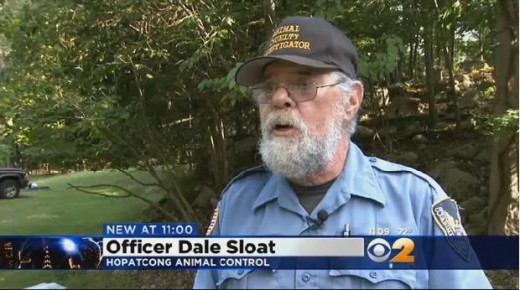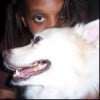Media Reports on Exotic Pets
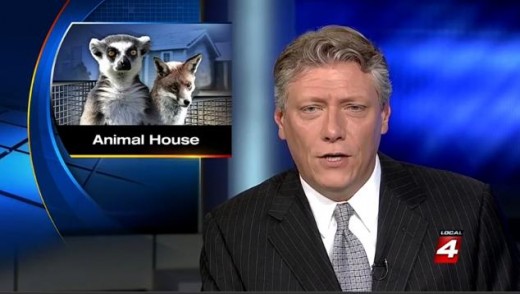
Why this list?
Throughout my time arguing in defense of exotic pet ownership and zoos, it is very common for my opponents to point to something they've seen on some news story to back up their claims that a certain animal must be dangerous, roaming the wilds invasively, or frequently abused.
Many elements of various media influence or perceptions of groups of people, and animals and their owners are no exception to this rule. Misinformation abounds in almost every report that covers exotic/wild/non-domesticated animals, and this information is unfortunately a big player in the misconceptions people have about animal behavior and people who may chose to own exotic pets.
So sit back and read in awe of some of the most blatant examples of rampant stupidity that is a result of the thriving, unforgivable ignorance of many so-called animal officials and the sensationalism-driven news media.
This list is always expanding! If you know of any other embarrassing misidentification or misinformation cases involving exotic pets or wild animals in the news, notify me in the comments or private message.
July 17th, 2011: A small native water snake is a baby BOA CONSTRICTOR
This story that I viewed on my local news (News Channel 12 Westchester) a few years ago inspired the concept of this hub. The associated video and story have been deleted but I saved the transcript. It is as sad as it is utterly inane.
It is the report of a small snake, presumed to have originated from a Walmart (it could have slipped into this man's shopping bag by plenty of other means), having been mercilessly smashed by a two-by-four instead of calmly released in the woods.
"MOHEGAN LAKE - One Walmart shopper got a slithery surprise when a snake popped out of his shopping bag after leaving the store in Mohegan Lake on Friday night.
Greg Kane says he found the snake when he set the bag down on his counter at home. He says he killed the snake and took the remains back to Walmart to try to sort out where the snake came from. He even called police in to try and determine where the snake came from.
The snake was identified as a baby boa constrictor and while not poisonous can carry harmful bacteria in its mouth, according to a veterinarian.
Kane says he believes that this was a prank and that someone put the snake near all the shopping bags."
The snake crusher ludicrously assumed that a prankster placed the animal in the bag! I guess it never occurred to him that snakes can move by themselves. Instead of condemning this ignorant and unnecessary killing, a sensationalistic statement was made.
Reporter: "...while not poisonous it can grow up to 14 feet and weight 60 pounds. Although it's not poisonous the snake can still be very dangerous because just one bite from that baby boa could make you really sick."
KILL! Makes the NEWS. A baby boa? You decide.
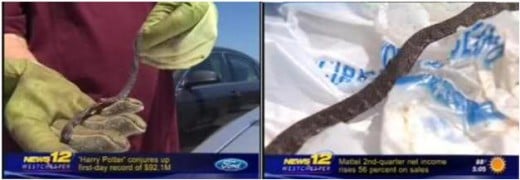
The fault for the nature of this report seems to lie with ignorant veterinarian (!) and State Assemblyman Dr. Steven Katz, who made the crappy identification diagnosis along with the claim:
"The proteins in them can cause an allergic reaction that could potentially kill you also."
No, Steven. This snake doesn't resemble a boa constrictor at all. It looks like a small colubrid snake that is highly likely to be a native animal. Also, a human probably has less of a chance of getting sick from a snake bite than a bite from a domesticated dog or cat (especially cats). This 'veterinarian' must have slept through the zoology portions of this training, because believe it or not, snakes do live in New York and most are harmless to humans (venomous snakes exist but are rare and endangered).
This story highlights the pressing need for families to attend nature centers and learn about local wildlife and how to live amongst it.
This is a boa constrictor
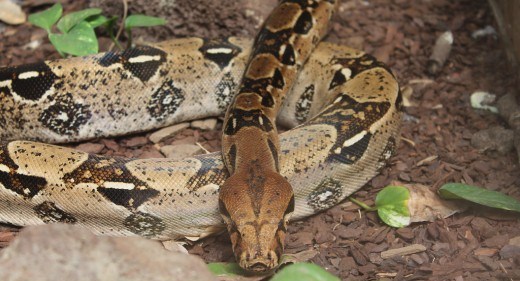
Yikes, a COUGAR spotted in a backyard! Wait...
The photo below is an actual photo posted on this article at the time that an elusive animal baffled neighbors and prompted wildlife experts to work on IDing the potential menace.
This animal, which is obviously a domesticated cat, was thought by some to possibly be a cougar. Whether or not a cougar is a juvenile, the differences between it and a regular cat should be obvious.
The takeaway message of this post is to never believe a news story's claim about some exciting exotic animal sighting (or an animal rights group's claim that evil exotic animal owners are setting them free) until there is absolute proof and confirmation of it. Here is another story of a false cougar sighting in Lyden, Washington, 2012.
Cougar?
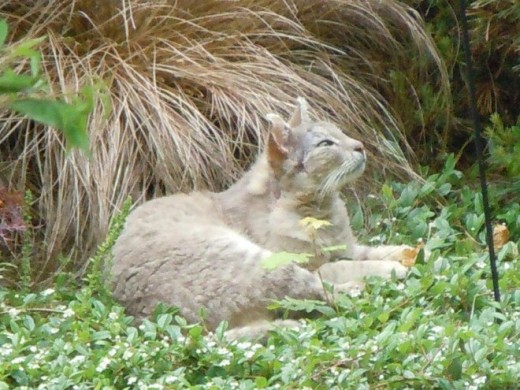
This is a cougar...
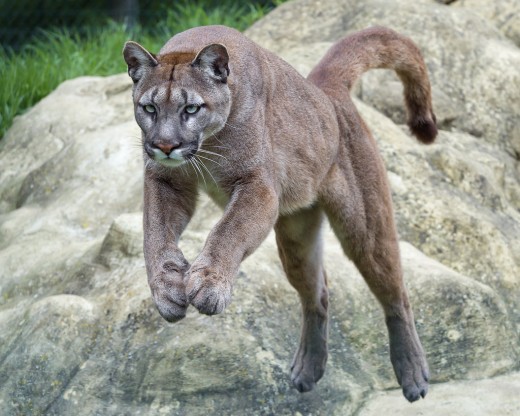
You might now be wondering why people are so silly and ignorant. I'm aware that not everyone is animal obsessed such as I can considered to be, but Google is a wonderful tool that can cure ignorance in seconds. I utilize it frequently to avoid making catastrophically stupid errors like this in subjects that I do not have sophisticated knowledge in.
The animal in question was finally called out as a housecat in an updated report.
August 21st, 2013. England: Here's another one!
“It obviously belongs to someone in a private collection.”
Is this roaming feline a cat or a lynx??!! Inquiring minds need to know!
I imagine the reader must be face palming at this moment. At first, golfers must have been thinking 'those pesky private owners can't seem to keep their animals contained', until the animal was identified by more intelligent people as a Main Coon, which is a slightly larger domesticated cat. Oh thank goodness, it's only a cat. Let the disease spreading and predation toward wildlife continue! (Remember, this is England, and they frown upon keeping cats indoors).
The "lynx"
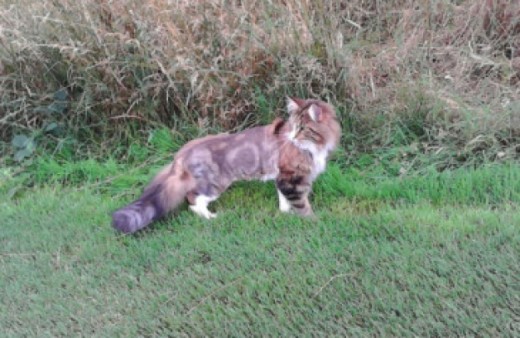
Google can tell you that lynxes don't have big tails!
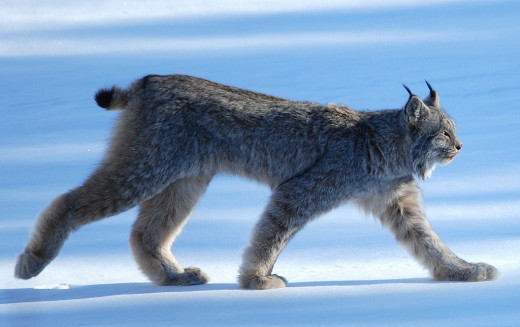
November 6th, 2013: The Bengal cat breed is a cross between a cat and a LEOPARD?
Reporter: "It looks like a leopard, walks like a leopard, but it’s actually a house cat!"
Actually it doesn't. At all. There are many things wrong with this silly report that was done on harmless 'designer cat breeds' last year (the video, not the article), but the first thing that made my mouth drop agape was the words out of the reporter's mouth, that Bengal cats are a cross between a cat and an Asian leopard. The photo on the right is indeed the picture used during this statement, just in case it was an accidental lack of inclusion of the word 'cat' next to the 'leopard'.
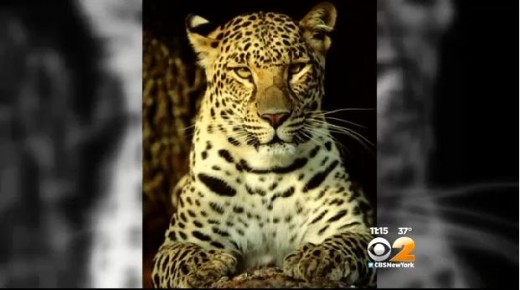
Bengal cats are derived from domesticated cats and Asian leopard cats, which are significantly different from any leopard. A leopard can, and probably will attack a human if given the opportunity. A tiny Asian leopard cat, smaller than some domesticated cats, would flee in any human's presence. Strangely enough, the report does include some photos of leopard cats afterwards, as though someone got confused and didn't know if they meant the big cat or the small one, so they threw them both in, and I'm sure viewers were equally confused and assumed it to be the leopard.
Bengals are basically interesting-looking high energy cats
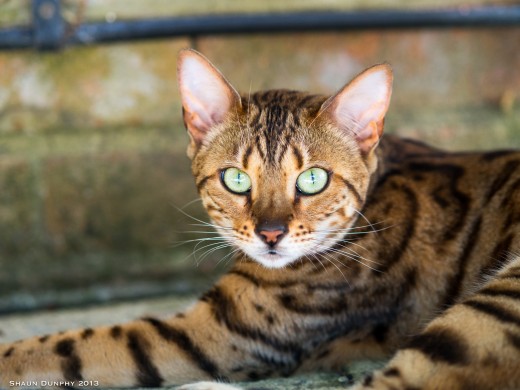
These cats might be unique from most regular cats (although not all domesticated cats are low energy couch potatoes either) but their difficultly is highly exaggerated. Anyone who loves the energy of a dog but the allure of felines would be a perfect owner for any one of the hybrids.
The reporter also goes on to say "And while their killer instinct may be gone…". THIS IS NOT TRUE! The Bengal cat has a prey instinct just like most other domesticated cats. Unfortunately, there is a lame misconception floating around that wild felines all want to munch on human beings for their dinner, but just like domesticated cats, small wild cats prey on small rodents, birds, and insects, and their instinct to do this is (unfortunately) well intact. Another flub, Bengal cats do not fetch $30,000, they probably got confused with Savannah cats ( a serval cross), and only specific F1 generations.
- 10 Small Exotic Cats That Are Kept As Pets
Profiles of the small or medium-sized exotic or wild cats that are sometimes kept as pets in the United States.
July 9th, 2014. Warren, Michigan: "An Aardvark! Say WAAAH??"
I'm not being cute, this quote was exclaimed by the reporter when describing the alleged exotic animals found in a residential home in Warren, Michigan.
OK first of all, I am SICK TO DEATH of the played out "Oh My!" Wizard of Oz reference anytime exotic animals are mentioned. Second, the reporters are obviously clueless to the fact that pets other than dogs and cats are sometimes kept as pets. That's somewhat understandable. But do they have to sound so ridiculous when reporting it?
"Nope. Holy aardvark! The neighbor had just spotted an aardvark outside of a home, say WUT?"
The reporter remarks, and he keeps going on and on about how shocking it is that this animal was found in a home while repeatedly showing a stock photo (shown below).
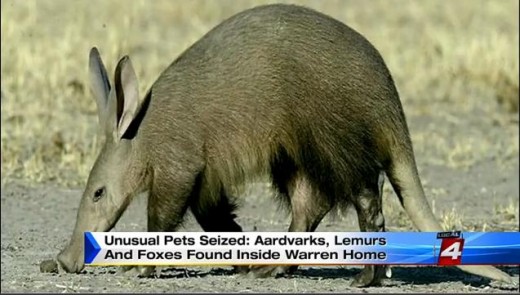
A neighbor explained that she can't stand mice, more-less an aardvark. Did it ever occur to the reporters that maybe these people might not know what the heck they are talking about? I for one, was a bit surprised. I haven't heard of aardvarks being kept in the private sector, but it's not as though they sound dangerous or impossible to care for.
Then it dawned on me that it was probably nonsense. An updated report confirmed there were no aardvarks, after the story had proclaimed two were found in the house. There were, however, lemurs, fennec foxes, coatimundi (probably confused for an aardvark) and various domesticated animals, all relatively common in private ownership across the country. They are not dangerous, and contrary to the ignorance of many, can be maintained outside of zoos with a knowledgeable owner (allegedly the owner in the story was not so).
Reporters really ought to use the words like "we heard that" or "we have unconfirmed reports of" when breaking stories that still have blurry details.

July 11th, 2014 HOPATCONG, N.J.: 20 foot boa constrictors! Get out of the water!
Boas really seem to have it bad when it comes to the news reporting on them. Not only are they frequently misidentified, they are also incorrectly described by ignorant animal officials.
This patently absurd flub is not really the reporter's fault. Actual animal control officers dispensed the unforgivable information, again.
"I would advise people not to put their baby in the lake. A snake this size could probably swim about 25 miles per hour."
“You don’t want to touch it. You don’t want to go towards it. You don’t want to threaten it. It’s not going to come at a person unless it’s threatened, cornered, caught – then, it will SQUEEZE you to death"
Yes, you read that correctly. Someone who has been hired to protect humans and animals basically makes things up as he goes along and spouts it off as a fact.
Reality check: Boa constrictors almost never exceed 13 feet in length. There has been exactly one death from a boa constrictor in recent U.S. history, a pet owner with the animal around his neck. All constrictor snakes combined kill on average one person a year, and this is even true despite the fact that many snakes that actually ARE large enough to kill people (Burmese pythons) are invasive in Florida. Even pets being killed by these free-roaming snakes are uncommon (but do occur). Spreading hysteria about one lone snake is irrational.
If this snake is a boa and it's 20 feet long, it is probably the largest boa on record. Based on the dumb conclusions listed in this hub, it wouldn't be surprising at all if people have completely misrepresented the size and species of the snake. My guess on the species at this point is an anaconda, if people's eyes aren't deceiving them.
Update: The snake was spotted but not captured by a reptile specialist, and no, he wasn't squeezed to death...yet.
"I would advise people not to put their baby in the lake."
